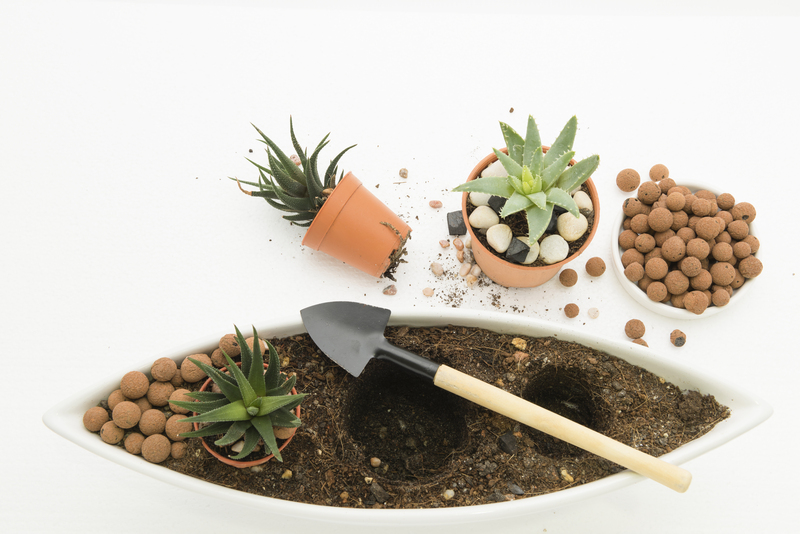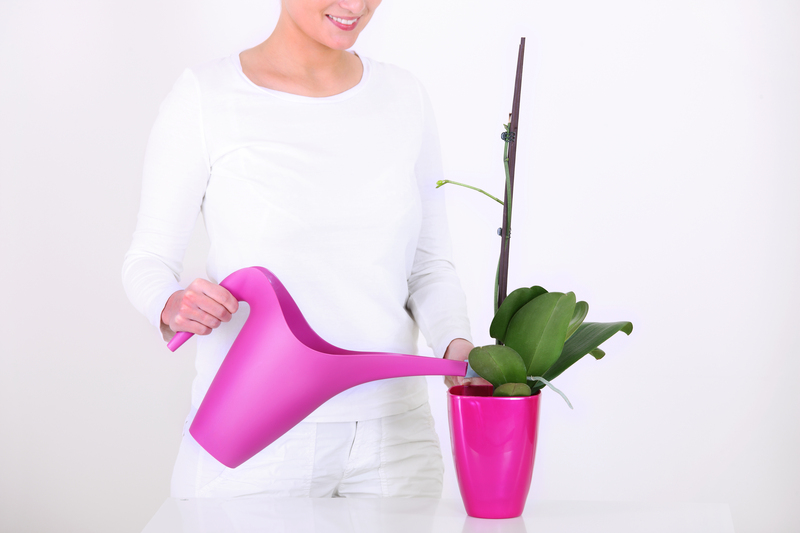Your Ultimate Orchid Care Handbook
Posted on 28/05/2025
Your Ultimate Orchid Care Handbook
Orchids have captivated gardeners and plant lovers for centuries with their stunning blooms and exotic allure. While their beauty is undeniable, orchids have a reputation for being challenging to grow. However, with the right knowledge and strategies, anyone can enjoy thriving, blooming orchids at home. In this comprehensive handbook, you'll discover everything you need to know about orchid care, best practices, and expert tips to ensure your orchids flourish year-round.
Understanding Orchids: An Overview
The orchid family (Orchidaceae) stands as one of the largest and most diverse plant families in the world, boasting over 25,000 species and more than 100,000 hybrids. Orchids can grow in varied climates, from the humid rainforests to arid deserts. To expertly care for orchids, it's essential to understand the unique needs of different orchid types.
Main Types of Orchids for Home Growers
- Phalaenopsis (Moth Orchid): The most popular household orchid, famed for its long-lasting flowers and relative ease of care.
- Cattleya: Known as the "Queen of Orchids," Cattleyas are admired for their large, vibrant blooms.
- Dendrobium: Highly diverse, with striking flowers and species adapted to a range of conditions.
- Oncidium: Often called "Dancing Lady," featuring profuse sprays of small, bright flowers.
- Vanda: Prefers high humidity and lots of light, famous for vivid, often fragrant flowers.

Choosing the Right Orchid
Selecting the ideal orchid is the first step to success. Consider these factors:
- Light availability in your home
- Humidity levels
- Your experience level (beginners often fare best with Phalaenopsis or Dendrobium orchids)
- Blooming season and flower longevity
Tip: Always buy an orchid from a reputable nursery or garden center. Inspect the leaves, roots, and flowers for signs of pests or disease, such as black spots, mushy roots, or deformed growths.
Essential Orchid Care Guidelines
Finding the Perfect Spot
Orchids thrive when their light requirements are met. Most household orchids prefer bright, indirect sunlight. East or west-facing windows are often ideal.
- Phalaenopsis and Paphiopedilum: Medium to low indirect light.
- Cattleya, Oncidium, and Vanda: Higher light, sometimes filtered direct sunlight.
- Leaves are a healthy, medium green (dark green usually means too little light; yellowish-green or red tinge can signal too much light).
Orchid Watering Techniques
One of the most common mistakes in orchid care is overwatering. Orchids are typically epiphytes, meaning they grow on other plants and have exposed roots that need to dry out between waterings.
- Water thoroughly, but allow potting media to dry before watering again.
- Use tepid, non-chlorinated water if possible.
- Reduce watering frequency during the winter months.
Tip: Insert your finger about an inch into the potting mix--if it feels dry, it's time to water.
Humidity and Airflow
Orchids like it humid: Aim for humidity levels between 40% and 70%.
- Place your orchid on a humidity tray or group plants together to maintain moisture.
- Avoid misting the flowers directly, as water can cause spots or rot.
- Provide good air circulation using a gentle fan if necessary.
Temperature Preferences
Understanding your orchid's temperature needs is vital. Most houseplant orchids prefer daytime temperatures of 65-80?F (18-27?C) and nighttime temperatures of 55-65?F (13-18?C). Some orchids, like Cymbidium, require cooler nights to bloom.
Potting and Repotting Orchids
Choosing Orchid Potting Mix
Unlike traditional houseplants, orchids generally do not thrive in regular soil. The best media include:
- Bark chips: Provide good aeration and drainage.
- Sphagnum moss: Retains moisture, suitable for small orchids or drier environments.
- Coconut husk chips: Offer balanced water retention and airflow.
- Perlite or charcoal: Enhance drainage and reduce acidity.
When and How to Repot Your Orchid
Repot every 1-3 years, or when you notice these signs:
- Potting medium is breaking down or smells sour.
- Roots are growing outside the pot.
- The plant appears top-heavy or unstable.
Repotting Steps:
- Gently remove the orchid from its pot and shake off old medium.
- Trim away any dead or rotting roots using sterile scissors.
- Place the orchid in a new container with fresh medium, spreading the roots.
- Water lightly and place in indirect light until established.
Fertilizing Orchids
For robust growth and regular flowering, fertilize your orchid with a balanced fertilizer (20-20-20 or specific orchid food).
- Apply a diluted solution every two weeks during the growing season (spring and summer).
- Use half-strength fertilizer to avoid root burn.
- Flush the pot with plain water once a month to prevent salt buildup.
Remember: "Weakly, weekly" is a helpful orchid feeding mantra!
Common Orchid Problems and Solutions
Pest Management
Watch for common pests like:
- Mealybugs: White cotton-like patches on leaves and stems
- Scale insects: Hard, brown bumps on leaves/stems
- Aphids and spider mites: Tiny insects, webbing, or sticky residue
Wipe affected areas with a cotton swab dipped in rubbing alcohol or use a gentle insecticidal soap spray.
Dealing with Orchid Diseases
Leaf spots, fungal rot, and bacterial infections are common, especially if the environment is too wet or poorly ventilated. Remove affected leaves, improve air flow, and avoid getting leaves and flowers wet when watering.
Encouraging Reblooming in Orchids
After the initial blooms fade, many new orchid growers are left wondering how to make their orchid rebloom. With patience and the right care, many common orchids (especially Phalaenopsis) will bloom again.
- After flowers drop, cut the flower spike above a node (small bump) to encourage another bloom, or cut it back entirely to the base.
- Provide a dip in nighttime temperatures (about 10?F/5?C cooler) for several weeks in the autumn to trigger bloom cycles.
- Continue regular feeding and watering, but allow for a slightly drier period to mimic natural resting phases.
Advanced Orchid Care Tips
- Label your orchids, especially if you own multiple varieties. Knowing each plant's species can inform their specific care needs.
- Monitor for root and leaf health - healthy roots are white or green and firm; healthy leaves are turgid and spot-free.
- Transition orchids outdoors in summer to a shaded, protected location (be wary of direct sunlight and pests).
- Control pests early to prevent infestations from spreading to your entire collection.
The Rewards of Orchid Cultivation
Although orchid care may seem intricate at first, cultivating orchids is a deeply rewarding hobby. With careful attention to their environment, watering, and feeding needs, your orchids will return the favor with spectacular blooms and ornamental foliage season after season.
Orchid Care Myths Debunked
- Myth: Orchids only bloom once.
Fact: Most orchids will rebloom annually or even multiple times a year with encouraged care. - Myth: Orchids are impossible to grow.
Fact: While they have preferences, many orchids adapt well to home conditions with basic care. - Myth: Ice cubes are great for watering orchids.
Fact: Ice can damage tropical orchid roots. Use room-temperature water instead.

Frequently Asked Questions: Orchid Care Made Simple
How often should I water my orchid?
Most orchids need watering every 7-10 days, but always check the potting medium first. It should be nearly dry before you water again.
Can I use regular fertilizer on orchids?
Orchids thrive best with specially formulated orchid fertilizers, but any balanced, water-soluble fertilizer diluted to half strength can suffice.
Why are my orchid's leaves turning yellow?
Yellowing can signal overwatering, poor lighting, natural leaf aging, or feeding imbalances. Assess the environment and adjust accordingly.
Conclusion: Your Journey to Orchid Mastery
With this ultimate orchid care handbook, you're now equipped with everything you need to nurture healthy, blooming orchids. Remember, successful orchid growing hinges on understanding your plant's specific needs, providing the right environment, and practicing patience. Whether you're a novice or an experienced enthusiast, your thriving orchids will reward you with vibrant color, elegance, and a sense of accomplishment for years to come.
Start your orchid care journey today and discover why these remarkable plants have enchanted generations of growers across the globe!



